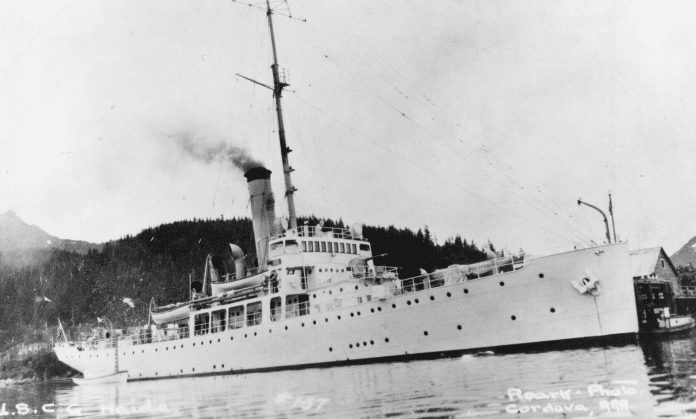
When passing the Coast Guard Buoy tender the Sycamore, think of the vessels that came before her. A coastal town in the Alaskan Territory, Cordova has always been an important port to the Coast Guard. Here the Coast Guard Cutter Haida is at the dock in Cordova during its tour of territorial waters during World War II.
The Haida was one of four 240-foot cutters that were conceived as the first true “multi-mission” Coast Guard cutters, equipped for police work in territorial waters, ice patrol, search and rescue, derelict destruction, and towing. Each ship had a remarkably heavy armament of two 5-inch guns, with a provision for the wartime installation of a third, and a 3-inch anti-aircraft gun. A turbo-electric drive system gave the cutters a top speed of 16 knots, which seemed plenty for the Coast Guard’s peacetime missions. The Union Construction Company of Oakland, CA built the four ships.
The entry of the United States into World War II sent the Coast Guard on a search for hulls that could be turned into convoy escorts. The 240-foot cutters were fitted out with depth charges, additional guns, sonar, radar and any other gear that could be crammed into them.
The Modoc and two of its sisters, Mojave and Tampa, were assigned to the treacherous Greenland Patrol; the fourth ship in the class, the Haida, spent the war in Alaskan waters.
All four were decommissioned and sold in 1947.
This photo came from the archives and collections of the Cordova Historical Society.














